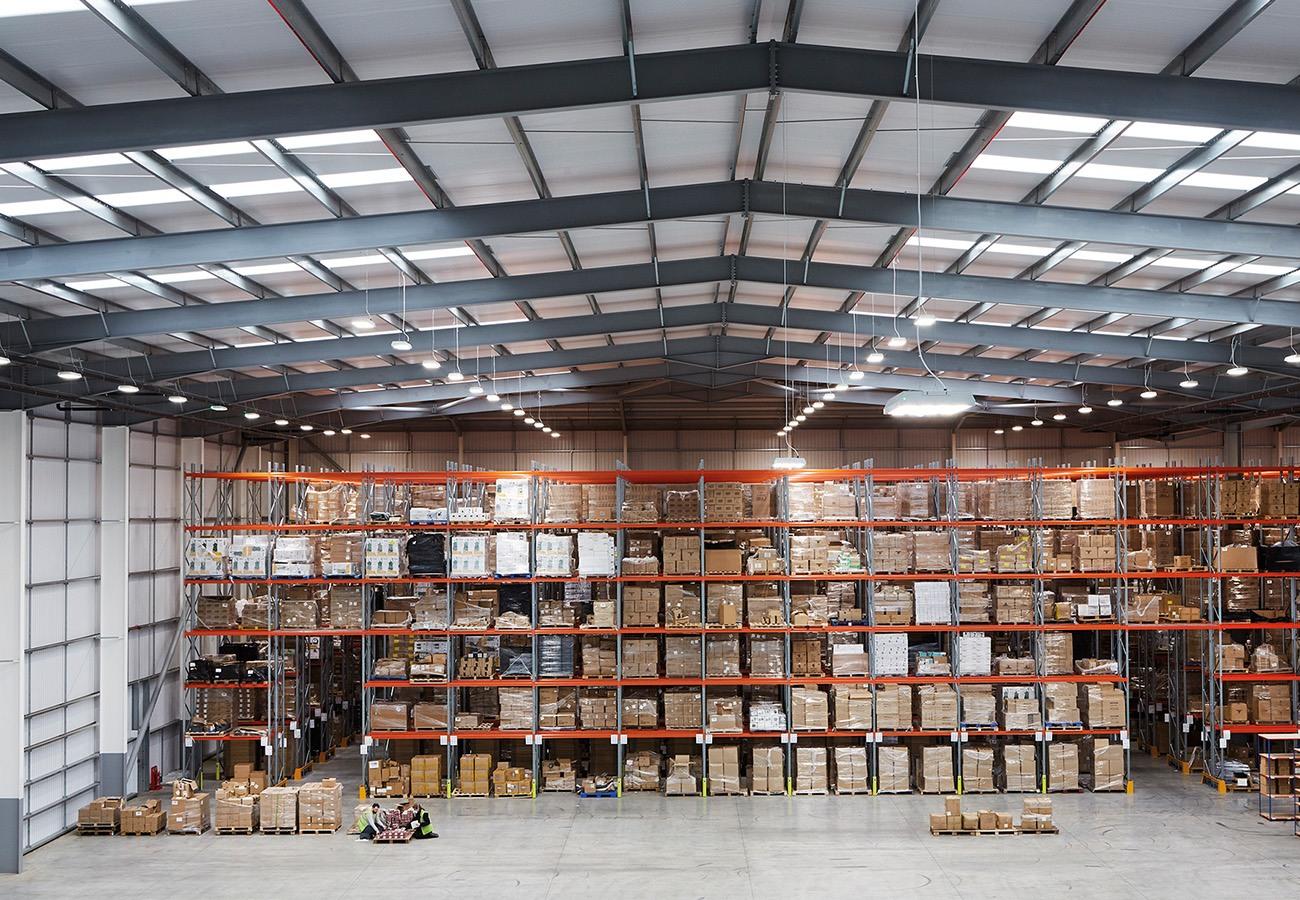
Preface
Wireless technologies have evolved over the last couple of decades to enable nearly anything to become connected. It is estimated that by 2030, we will be living in a wireless world in which trillions of connected endpoints will unify our experiences across the physical, digital, and human plains.
Nestled somewhere between the autonomous vehicle movement, the smart robot insurrection, and the Promised Land of the metaverse resides the wireless smart lighting control revolution. This is a market that is projected to reach USD 39.0 billion by 2024. Enabling everything from a single room set up to large-scale, multi-site lighting networks, wireless lighting control systems open the doors to a brighter future.
Casambi is a leader in modern wireless lighting control solutions based on Bluetooth Low Energy. The company was founded in 2011 with the belief that smartphones and wireless technologies will fundamentally change the way we interface with everyday objects around us. Key aspects of the Casambi solution are great user experience, high performance, and scalability from basic individual fixture controls to industrial-scale solutions with cloud-based remote control, monitoring, and data logging.
Industrial spaces are one of the more complex building types to illuminate. Wireless lighting control projects are gaining popularity in this sector owing to their proven track record of reducing energy consumption, lowering operating costs, improving safety, and providing a transparent network infrastructure that can easily scale up with minimal disruption and installation costs.
This guide outlines the transformative power of Casambi’s wireless lighting control solution when applied within industrial spaces. It has been written with a view to demonstrating just how easy and joyful it can be to specify lighting solutions for industrial environments.
Key drivers, trends, and industry dynamics
Going greener
Proven to yield energy savings of up to 70%, many governments are enacting measures to ensure LEDs are taken into use in residential, public, and industrial spaces. The European Commission predicts that such efficient lighting products will also allow Europe to save up to 34 TWh of electricity per year by 2030 and will prevent around 7 million tonnes of CO2 from being emitted into the atmosphere annually. Most recently, the EU has implemented new lighting regulations to further improve energy efficiency across the lighting market. As of 1st September 2021, the EU SLR (Single Lighting Regulation) has laid down new eco-design requirements for light sources and separate control gear. These span more stringent minimum efficacy thresholds on light sources and separate control gear to encourage the lighting industry to raise the bar and further improve energy efficiency beyond today’s solutions. The augmentation of energy services through IoT applications such as LED light controls and sensors is also further supporting this drive to reduce consumption and achieve sustainability goals.
Efficiency gains
McKinsey reports that at the outset of 2020 major factors were increasing economic pressure on industrial spaces; Trade disputes, the aftermath of BREXIT, slowing demand in China, challenges in the automotive industry, COVID-19, and other ingredients impacting global supply chains. Against this backdrop of uncertainty and change, manufacturing executives are seeking ways to deploy solutions to increase the productivity, resiliency, and efficiency of their operations – to improve operation management, inventory optimization, and human productivity.
Achieving uninterrupted facility operation
Industrial sites are places where efficiency and durability are of the highest priority. According to Deloitte, unplanned downtime costs industrial manufacturers an estimated USD 50 billion per year. Over the last decade, many industrial facilities have followed the LED transition trend and invested in high-efficiency luminaires with long lifetimes. Because LED lamps typically last up to 20 years, once installed they are less likely to cause maintenance shutdowns within mission-critical environments. This long lifetime aspect is especially important as most luminaires taken into use in warehouses, workshops, or manufacturing areas are installed in locations that are either hard to reach or where maintenance interruptions will have severe negative effects on business.
Among all building types, industrial facilities (particularly industrial warehouses and storage areas) reportedly have the second-highest lighting energy consumption (46kWh/sqm per year) after retail spaces. Therefore, reducing operational and maintenance costs while increasing energy savings is very important. Workshops or production halls are areas that, in many cases, may operate 24/7, so energy-efficient luminaires and more efficient use of daylight are beneficial not only for energy savings, but also for improved visual conditions, and the general wellbeing of employees.
Improving worker welfare
New European standard, BS EN 12464-1:2021, was introduced last year, which puts more emphasis on personalized lighting requirements for employees in the workplace. Across the pond, in the United States, the Occupational Safety & Health Administration (OSHA) of the US Department of Labor requires companies to follow specific lighting regulations in the workplace. These include recommended lighting levels across common commercial installations such as offices, factories, workshops, and warehouses. When it comes to industrial lighting standards, common application errors which lead to OSHA-induced penalties include the discovery of uncovered wiring and failing inspection due to improperly illuminated workstations. Catering to highly localized lighting needs across a large site – where one size does not fit all – is paramount to workforce health and safety. Wireless smart lighting control addresses these requirements head-on.
Tunable white light can help with the attention and focus of employees who work night shifts. Additionally, task tuning, where the local lighting level is adjusted according to the specific requirements at each task area, also helps improve comfort and safety conditions for employees, while at the same time, saving energy by 18%.
Utility companies are increasingly offering incentives and attractive time-of-use tariffs to companies that can lower their energy demand at certain peak periods. Having the flexibility to benefit from such incentives will also help reduce soaring energy bills.
How wireless smart lighting control can help solve today’s challenges
Application highlights
The building blocks of smart lighting control
Wireless smart lighting systems principally comprise four elements:
The light controller
This is the communication transceiver that controls the driver or the light-sensitive module within a luminaire itself.
The central management software
This gathers data and controls all the luminaires in the lighting network. Isolated lights can be remotely controlled or can be grouped together and controlled synchronously.
The communication protocol
This is the system of rules that allows lights within a network to exchange messages without the need for wired communications.
The gateway controller
This aggregates communication from the light controllers and backhauls data to a central management platform. Building management personnel can remotely monitor their lighting networks and analyze performance dashboards in real-time.
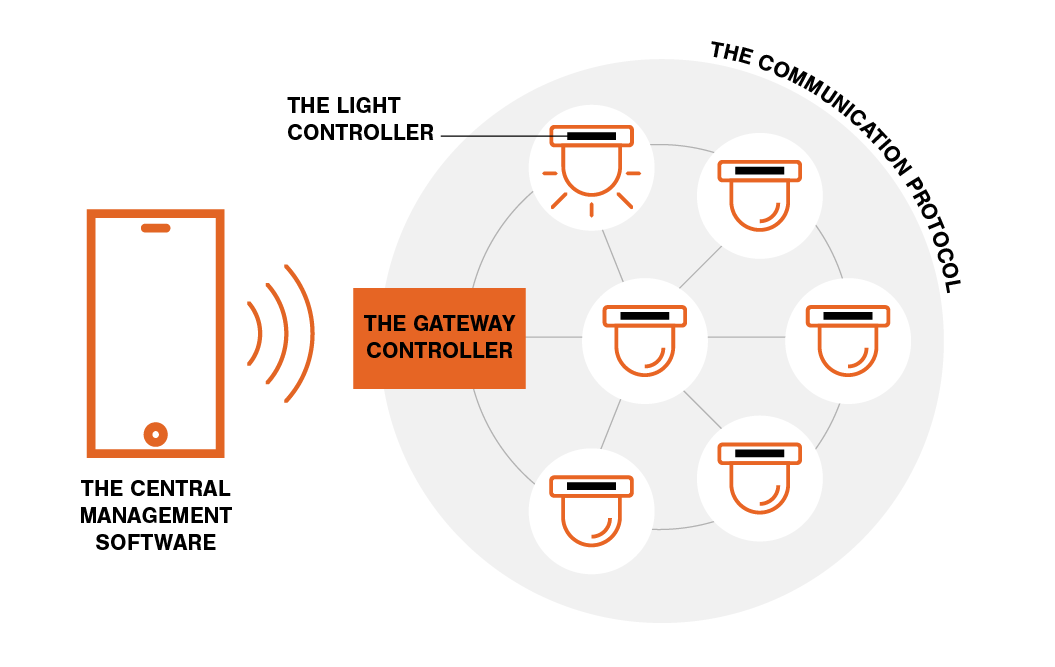
The Specifier’s Thought Process
There are many details to be considered when exploring smart light control applications, from the modes of communication, the light design and functionality, and the platform. There is often a mistaken heavy sense that the correct decision must be made from the outset, as it is unalterable. To ensure the smooth deployment of smart lighting, specifiers partner with solution providers that bring products and expertise to the table. Price points and future-proof technology are deciding factors. But few vendors provide the complete set of products to meet their needs. When many parties are involved, it may complicate projects and lengthen the rollout process.
Wireless Options
Traditionally, lighting systems have deployed wired communication protocols such as DALI, PLC, POE. The advent of wireless protocols such as ZigBee, Bluetooth Low Energy, Wi-Fi, 6LoWPAN, and other hybrid protocols has liberated such systems from the physical constraints of wiring. However, while the introduction of new protocols provides a wide range of connectivity options for smart lighting control needs, this abundance has resulted in a proverbial spaghetti mess and a certain level of decision-making anxiety. Nobody wants to take a punt on a protocol that might become obsolete in years to come or be rendered incompatible with incoming solutions.
As the world in general witnesses the continued proliferation of life easing IoT, calls for greater interoperability between the vast array of different devices are being addressed. There are many initiatives seeking to address the interoperability problem by attempting to unify and standardize wireless connectivity across the different ecosystems and protocols. The Connectivity Standards Alliance is developing Matter, a royalty-free home automation connectivity standard. The Bluetooth Special Interest Group is fostering member collaboration to create new specifications. The ‘Thread Group’ alliance was formed in 2014 as a working group to aid Thread in becoming an industry-standard by providing Thread certification for products. DALI+ is the result of the DALI alliance’s effort to give wireless connectivity to the existing DALI protocol.
In a lighting industry that is still deciding which connectivity standards shall reign supreme, Casambi has successfully gone to great lengths to bridge the divide.
How Casambi can help
Casambi offers a wireless communication solution that caters well to today’s industrial facilities – by directly answering their need for powerful lighting control while tapping into further energy savings with sensors, switches, and other devices from the Casambi ecosystem.
Casambi is a leading producer of wireless lighting control systems, using technology based on Bluetooth Low Energy. With Casambi, it is possible to create a streamlined, automated, and super-easy-to-control lighting experience by bringing a whole plethora of electronics in on the action from luminaires to sensors, drivers to switches.
When light designers set out on a mission to create the ultimate connected lighting experience, Casambi ensures their projects deliver. Casambi’s technology and services provide designers with a framework to wirelessly link devices together enabling the end-user to create a personalized smart lighting ecosystem.
Casambi’s technology can be integrated into anything from individual lighting fixture controls to industrial-scale solutions with cloud-based remote control, monitoring, and data logging. Hundreds of third-party ecosystem providers already enjoy a dynamic user experience, excellent reliability, and unparalleled performance.
Casambi’s technology forms a mesh network (‘Casambi Mesh’), which enables encrypted node-to-node communication inside a lighting network. The Bluetooth Low Energy protocol enables communication between a mobile device (or the control device) and the Casambi platform. Bluetooth Low Energy is the most popular and reliable low power radio technology found in all modern smartphones, tablets, and smartwatches today.
Bluetooth Low Energy was conceived and developed at the Nokia Research Center where the founders of Casambi worked. That’s why Casambi has had the unique advantage of realizing the full potential of Bluetooth Low Energy early on. Casambi started the development of the solution before there were any Bluetooth Low Energy devices on the market. Growth forecasts predict that more than six billion Bluetooth-enabled devices will ship annually by 2025. Furthermore, Bluetooth Low Energy is projected to have a decisive impact on the market with 96% of all Bluetooth-enabled devices forecast to include Low Energy by the same year.
What is a Mesh Network?
Mesh networking is essentially a low-latency, low-power mesh network protocol, which in layman’s terms translates to a super-fast, battery life-extending, and highly reliable connection.
Mesh networks are self-healing: If one smart device in the network suddenly becomes unavailable, in a mesh network data is automatically rerouted to prevent a connection drop.
Mesh networks enjoy strength in numbers: Unlike star topologies, mesh networks expand automatically as more devices are added to them. They can scale up to hundreds of devices without needing a central hub to connect them.
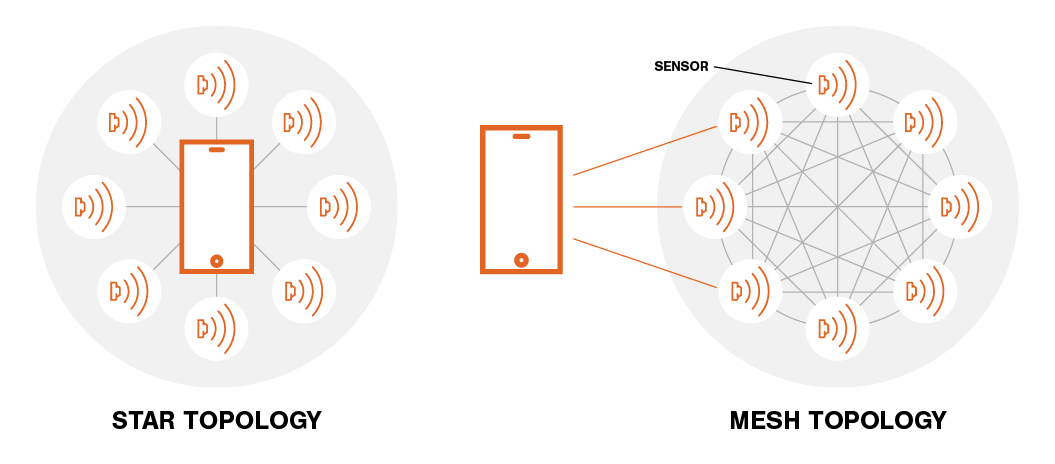
All nodes communicate via radio signals and the mesh topology connects the many nodes ensuring that data has multiple routes to its destination. If one device goes offline, the communication can continue without any interruptions because every single node has the same intelligence as other nodes throughout the network. In other words, if a device goes offline and comes back online again, it automatically and swiftly obtains and downloads from its closest neighbors all the information that it needs to function correctly inside the network. This makes the network robust and self-healing.
There is an abundance of popular mesh networking standards available today to add wireless connectivity to IoT products. Each has different technical strengths, performance characteristics related to throughput, latency, and the ways in which they are taken into use. Casambi, Bluetooth Low Energy, Zigbee, Thread are all mesh networks. But the real efficiency lies in how you set up the network, how it operates, and how interoperable it is.
Why Choose Casambi?
It can be argued that Casambi is the only truly interoperable and completely scalable, cost-effective solution that is available for wireless lighting controls today.
Open Ecosystem Architecture
Casambi’s open ecosystem architecture is a generation ahead of the proprietary legacy systems currently on the market. Casambi is at the core of an entire ecosystem of products. All of the company’s native products and all of its partners’ Casambi Ready products are 100% compatible with each other. The technology is also integrated into fixtures, drivers, switches, sensors, and a diverse collection of modules.
Casambi collaborates with a vast number of leading luminaire, driver, LED board, LED lamp, and lighting control module manufacturers. Currently, there are 1000+ (and counting!) Casambi-enabled products available.

Extend DALI systems with wireless Casambi networks
With Casambi’s Wireless DALI Gateway, wired installations can be easily expanded wirelessly, making Casambi the ideal solution for renovations or extensions. In this scenario, one can enjoy all the benefits and flexibility conferred by wireless Casambi networks and still keep all the DALI functions and controls in use.
Casambi CBU Modules
Casambi CBU modules or Casambi enabled drivers can convert a large multitude of non-wireless luminaires into wireless (1-10V, 0-10V, DALI, TED,…)
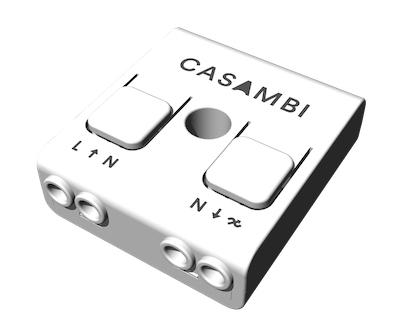
CBU-TED
CBU-TED is a trailing-edge dimmer for operation of incandescent lamps, dimmable LED lamps and dimmable LED control gear.
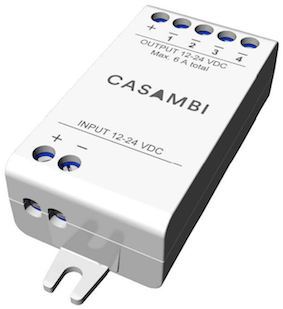
CBU-PWM4
CBU-PWM4 is a four channel PWM dimmer for constant voltage LED loads, such as LED strips and constant voltage LED modules.
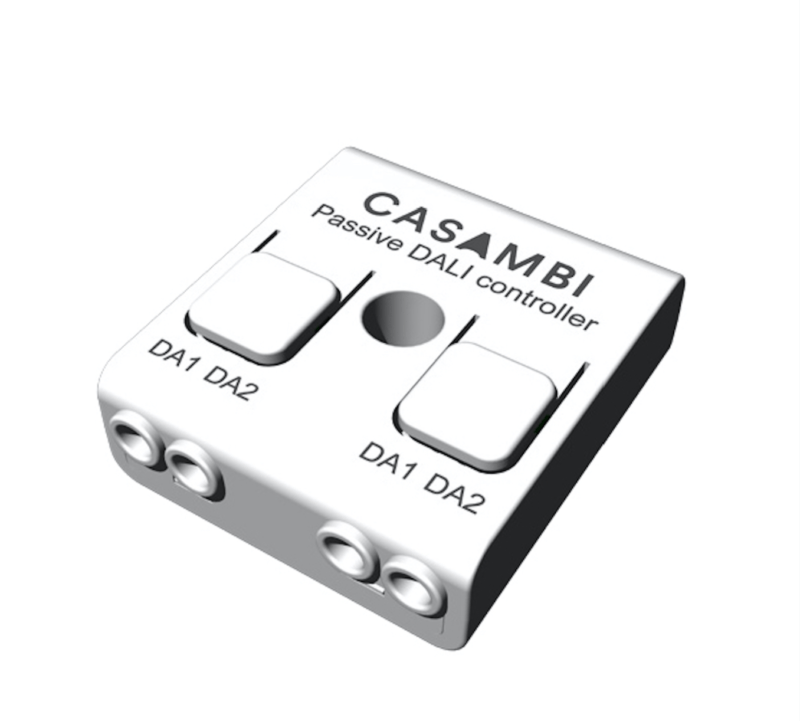
CBU-DCS
CBU-DCS is a DALI controller. CBU-DCS does not have its own power supply. Instead, it is powered directly from a DALI bus.
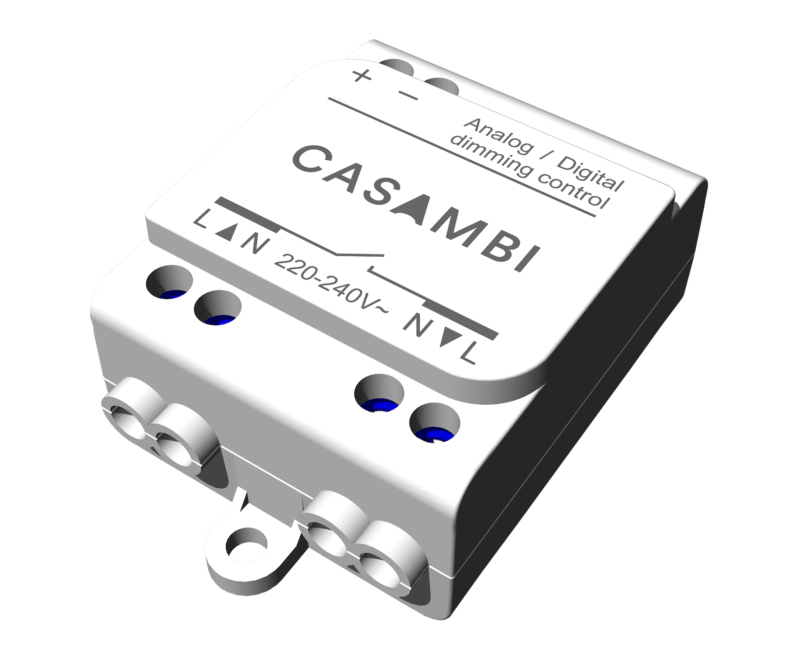
CBU-ASD
CBU-ASD is a wireless control unit for LED drivers with 0-10V, 1-10V or DALI dimming interface. The control output can be configured either as analogue 0-10V (and 1-10V) or as a digital standalone DALI control interface.
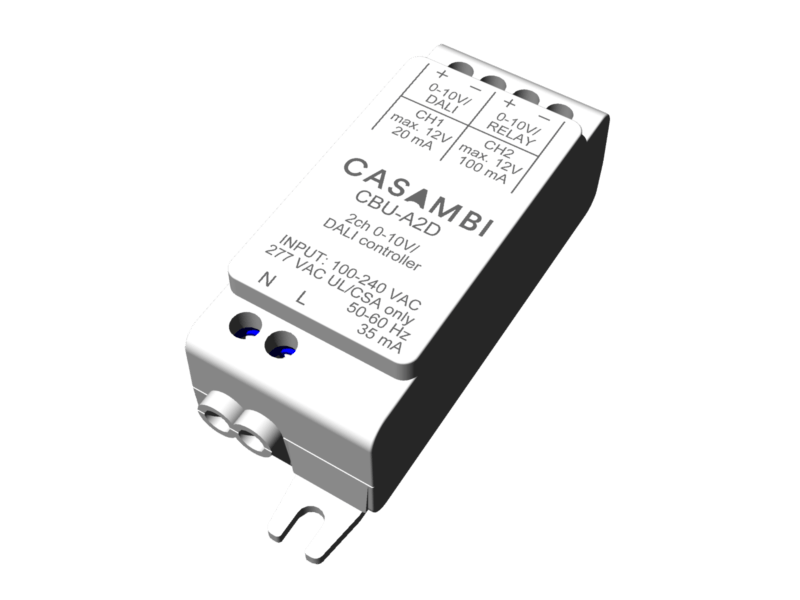
CBU-A2D
CBU-A2D is a 2 channel 0-10V/DALI controller. CBU-A2D has a universal 100-277 VAC input voltage range. It can control one or two 0-10V controllable LED drivers, or it can control a tunable white LED driver with two 0-10V control interfaces.

CBU-ASR
CBU-ASR is a multi-purpose wireless control unit. It has two 0-10 VDC outputs. For tunable white applications, it is an ideal match for one or two-channel dim-to-off drivers that provide auxiliary power. It can also be used with industry-standard power packs to turn on and off large electrical loads.
There are two options for adding Casambi functionality to luminaires:
- Stage 1 – Option 1: Select a “Casambi Ready” luminaire from our ecosystem partners, which ensures out-of-the-box interoperability in terms of connectivity and performance.
- Stage 1 – Option 2: Luminaires with integral drivers, decorative fixtures with LED lamps, or other devices can gain Casambi connectivity using CBU devices.
- Stage 2: Use “Casambi Ready” switches and sensors with wireless mesh functionality to increase the interaction options and connectivity of your network. Or use Casambi CBUs to integrate sensors and switches to the network.
- Stage 3: Commission and program the lighting network using the Casambi lighting control application.
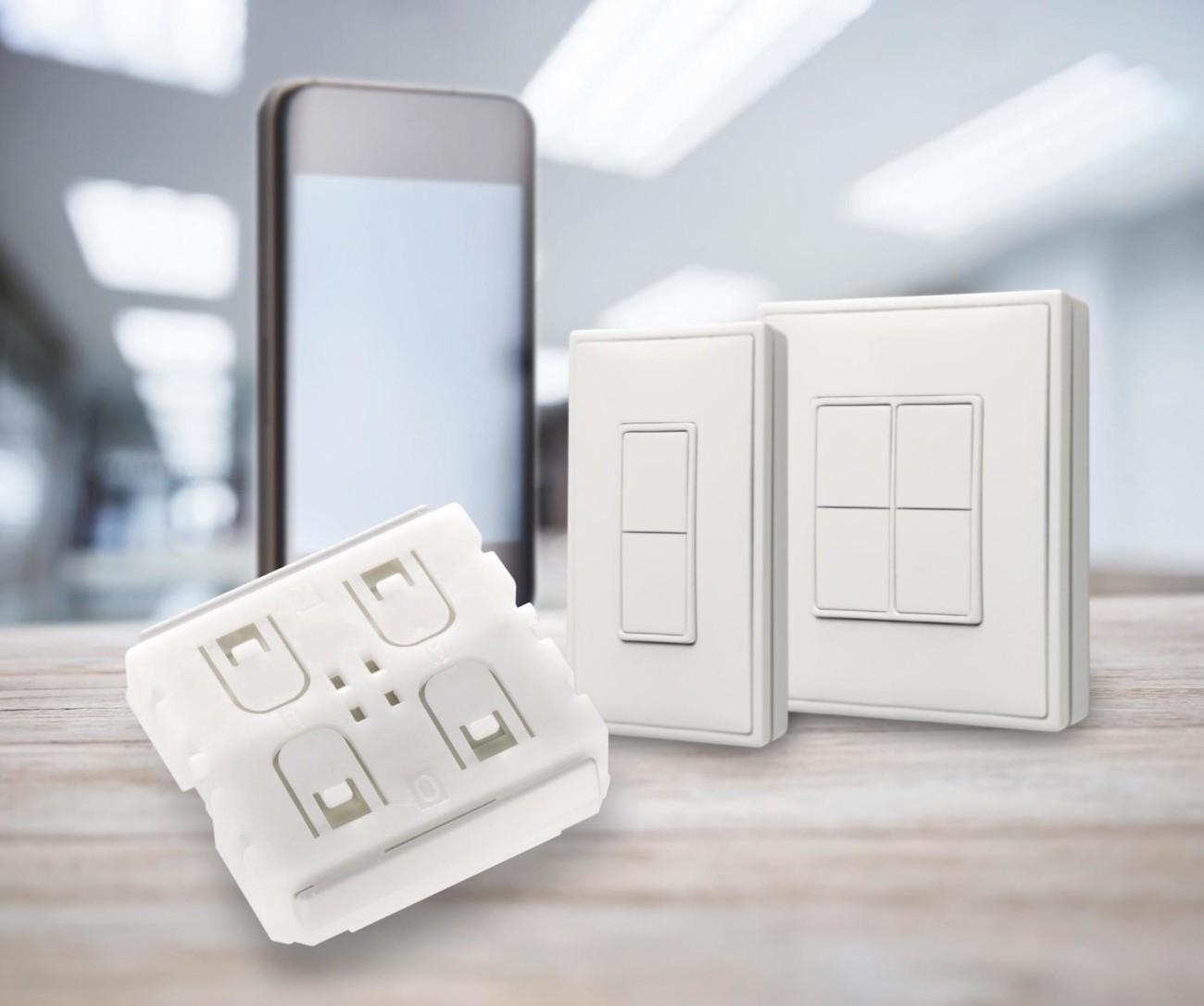
EnOcean – a pioneer of self-powered wireless technology – offers battery-less, energy harvesting, Bluetooth Low Energy switch modules, which can be paired to a Casambi network. Their switches can control individual luminaires, groups of luminaires, all luminaires in a network, elements, scenes and animations.
Intuitive Application
Casambi-enabled products are configured and used with the Casambi app, freely available for both iOS and Android. For the end-user, there is no need to worry about making sure they have the right device in hand because all Casambi products are required to work with phones via Bluetooth Low Energy. Additional IT equipment, dongles, special software licenses are not needed to set up a network. This reduced softwarecomplexity frees designers from the utilitarian interfaces within the commissioning tools of legacy control systems.

Scalability
To control a basic single room lighting network, all that is required is a suite of luminaires, switches, or sensors that have wireless connectivity. And a mobile device for commissioning and setup. Within the Casambi app, it is possible to create luminaire groups within a network, and then create multiple networks that can all link together. A single Casambi network can contain up to 250 devices and an endless number of networks can be created in a single site. From a single room, it is easy and cost-effective to upscale to site-level functionality and then expand to outdoor applications. This is what differentiates Casambi from other solution providers today. The advent of wireless lighting control enables lighting designers to expand from the use of discrete, isolated products to product systems and from there to systems of systems that all link together.
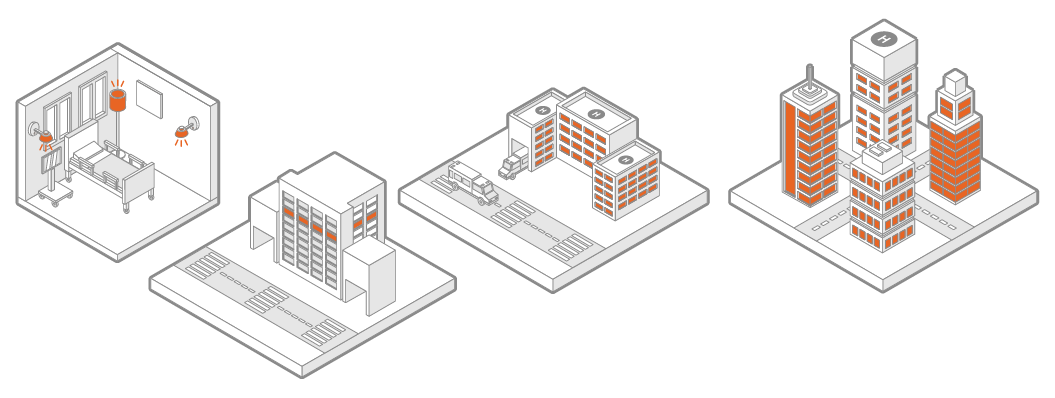

Flexibility
Because the need for hardwiring has been eliminated, any late additions or changes to lighting installations can be easily implemented in the app. It is possible to add or remove luminaires, add new functionality and new scenes at any time. It is all done in the software. From programming complex functionality, including data analytics, to remote control of site facilities and integration with building management systems, the possibilities are boundless.
In 2020, Casambi launched a Cloud API (Beta) to galvanize its open platform strategy. The Cloud API allows software developers to integrate with BMS and in doing so, opening the doors to remote monitoring of Casambi networks, including access to sensor, diagnostics, and usage data. The Casambi API consists of Rest API & Websocket services, and all received data is in human readable JSON format.
With the Casambi Extension Interface, any sensor information, such as humidity and temperature levels or dangerous gas leaks, can be collected and processed for the safety or the efficiency of your facilities.
Certain BMS have modules with relay outputs which can then be hardwired directly to a Casambi module configured with a switch input. When the relay in the BMS triggers it automatically, it calls the Casambi device to trigger a certain action in the Casambi network.

Interoperability
As alluded to in a previous chapter, the activities of different IoT alliances and industry groups have created a lot of discussion about competing standards. By and large, nobody wants to take a bet on any single standard approach for fear of incorrectly hedging their bets on a solution that might become obsolete in years to come.
Interoperability relies on four things.

Silicon
BLE SoC (System-on-Chip)

Firmware
Complex software with mesh, security and most of the lighting control functionality

Software
Full-featured lighting control application

Control devices
LED-drivers, Sensors, Switches
The control devices make up an ecosystem – the LED drivers, luminaires, sensors, switches. However, the chip inside the connected device limits its physical abilities. The firmware that provides the low-level control for a device’s specific hardware caps its capabilities and maintains security. The end-user application (the software to configure lighting) dictates the user experience, the interfaces, how to set up a network, and how the user interacts with their network.
In a standard-based ecosystem, the chips that go inside the devices deployed in a network generally come from multiple vendors. Although they may run on a standardized protocol that is intended to enable the same communication, all the chips are different. They likely operate on different runtime resources. They likely have different limitations.
When working with multiple vendors, it is important to be aware of the pitfall of having multiple versions of the firmware within a network. The whole system will be limited by the capabilities of the weakest/oldest device in use within the ecosystem.
Conversely, in a proprietary system, everything comes from one single vendor, so all resources are the same. However, in this scenario, a lighting planner may feel extremely limited when it comes to picking the luminaires, the drivers, sensors, or switches from one vendor to make sure everything works seamlessly together.
Casambi brings together the best of these two worlds. To coin an analogy, it is like an exclusive party, to which everyone is invited. The chip and the firmware come from the same vendor, which is Casambi. This guarantees that the physical infrastructure inside all control devices is the same. A specifier has the freedom to choose the control devices from an extensive list of vendors.
Casambi remotely and safely updates devices in the field with the latest software and firmware. Over-the-Air programming allows Casambi to push new software features and additional functionality out to the entire fleet of installed devices at once.

Security & robustness
Although communication range in radio technology may ultimately vary depending on the environment in which it operates, the typical range for wireless connectivity is 30 meters indoors.
With high antenna performance, and every node endowed with intelligence, all communication inside a Casambi mesh network is robust and meets the demands of all challenging industrial environments.
Communication between mobile devices and nodes is fully encrypted, and a five-level approach for security and authentication means that all data transmitted within a Casambi network is protected and safe.
All nodes in a Casambi mesh network carry a backup of the entire system, which speeds up the communication and makes it all the more stronger.
Wireless Emergency Lighting
Tridonic, a world-leading supplier of lighting technology, provides wireless emergency lighting based on Casambi technology.
Tridonic uses the proven basicDIM Wireless system as the backbone of the solution, providing wireless connectivity for the emergency luminaires via a fail-safe mesh network without any additional cabling or structural changes. The luminaires are set up via Bluetooth Low Energy.
Unlike other wireless emergency lighting systems, this solution brings additional strength to the wireless mesh and overall system, as well as supporting DALI DT1 standard devices – meaning reliable interoperability with DALI local battery emergency control gear. DT1 interoperability provides advanced data extraction capabilities from devices for any other analytics that may be required.
Existing DALI emergency luminaires with a PRO emergency lighting unit can be easily upgraded and integrated into the wireless network. For this purpose, Tridonic offers a new, compact basicDIM Wireless G2 module.
Luminaire manufacturers can easily convert standard emergency luminaires equipped with a PRO emergency lighting unit into wireless emergency luminaires with the new Tridonic basicDIM Wireless G2 module.
A gateway connects all the wireless emergency luminaires to a sceneCOM evo controller. Once commissioned, the controller acts as the “brain” and takes over command of the entire lighting solution – fully automated and exactly as the user requires. This also applies to the required central monitoring and automated testing of emergency and safety lighting systems.

Casambi X Tridonic solution for emergency lighting provides:
- Central monitoring of individual luminaires.
- Automatic testing of individual luminaires.
- Standard-compliant logbook with all the relevant information for downloading as a PDF or XML file.
- The possibility to be integrated into existing installations without the need for additional wiring.
- External access via a PC, notebook, tablet or other internet-enabled device. The test and system data are accessed via Ethernet from any web browser.
- On request, a software package can inform the asset manager about faults and errors via email.
- Up to 200 sceneCOM evo controllers can be connected (as many as 38,400 individual luminaires).
- Firmware updates are available wirelessly on any Android or iOS device.
- The relevant components of the wireless emergency lighting system are BSI Kitemark™ certified and comply with all standards and regulations relevant to emergency lighting.

Benefits at every step of an industrial lighting project
- Save up to 40% on energy bills for industrial facilities using a multiple control strategy combining occupancy detection and daylight harvesting. With Casambi, any existing lighting installation can be upgraded to include occupancy and daylight sensors.
- Save time and money by replacing the need for rewiring with wireless data communication. This enables rapid commissioning via the Casambi app.
- Eliminate the need for patrols and the cost of expensive maintenance call outs with remote monitoring, automated fault detection, testing and predictive maintenance.
- Increase safety with wireless emergency lighting. Casambi and Tridonic have partnered to produce a wireless emergency system, which enables automated testing and reporting. Save time and costs on the re-commissioning of networks in busy buildings.
- Casambi’s intuitive design makes commissioning tasks so simple that they can be easily handled by facility managers.
Specifying with Casambi – How to get started
Casambi has a rich and plentiful ecosystem of products designed for industrial applications.
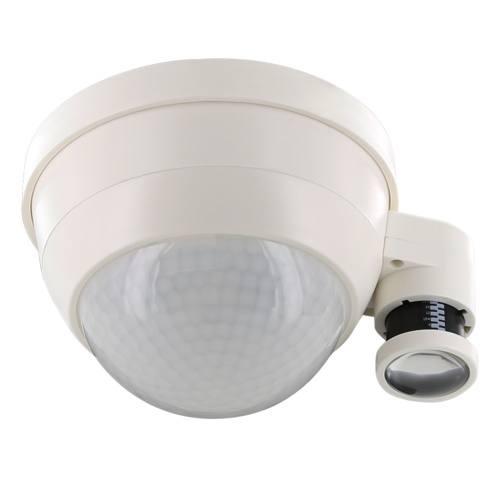
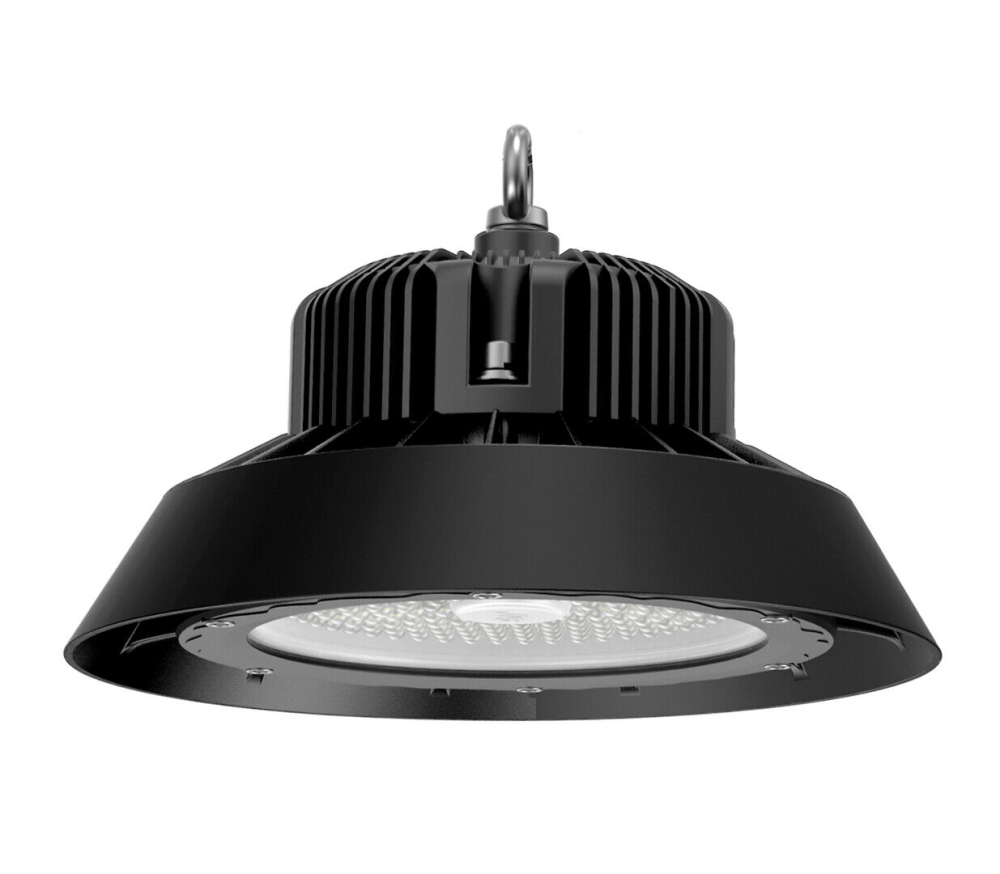

Specify a project with Casambi in five simple steps
- Every project starts with luminaire selection. With Casambi, off-the-shelf Casambi-Ready luminaires can be chosen. Or, a pre-existing luminaire, without Casambi connectivity, can be converted by using a CBU. For example, CBU-TED is a Bluetooth controllable, Casambi-enabled trailing-edge dimmer for the operation of incandescent lamps, dimmable LED lamps and dimmable LED control gear. It can be installed behind a traditional wall switch, inside a luminaire, or into a ceiling outlet box. Casambi’s CBU modules can convert a multitude of non-wireless devices such as DALI, 0-10v, or 0-10v devices to Casambi wireless.
- When deciphering the end-user and how/if they will interact with the light stack a specifier just picked, it is easy to programme the Casambi app to be compatible with their bespoke needs. It is possible to have manual controls and/or automated controls which use sensors, or timers.
- When selecting sensors and switches, for manual control, it is possible to take a switch from the Casambi ecosystem or simply use the Casambi app as the end-user control. Highly intuitive and easy-to-use, the app contains all the functionality that one might need or can imagine. If a specifier is working on a historical building and wants to keep the original switches, again, it is easy to give them wireless connectivity by deploying a CBU module.
- When defining the functionality and the complexity of the project, a specifier may find they need to interface their planned network with other systems. For example, it might be necessary to interface with a pre-existing DALI installation already in use within the building. Casambi can communicate with a DALI network through a CBU-ASD. This is a wireless control unit for LED drivers with 0-10V, 1-10V, or DALI dimming interface. The control output can be configured either as analog 0-10V (and 1-10V) or as a digital standalone DALI control interface. When it comes to data collection and recall, it is possible to connect a Casambi ecosystem with a third-party Building Management System (BMS). The data generated can either be kept within the lighting network inside the premises, or it can be sent to the cloud where it is transferred to, for example, visualization software for energy consumption monitoring or predictive maintenance services.
- When specifying the solution, full lighting control system tender texts complete with system requirements, control functionality, device specifications with datasheets, and app notes are available to download from Casambi’s webpage
Casambi – Case Studies
Safran Transmission saves energy while improving working conditions
”Thanks to the modernization of lighting, we were able to reduce carbon dioxide emissions by about 240 tons per year, and at the same time we managed to reduce costs due to electricity consumption by about 20%”
Piotr Juszczyk – Maintenance manager , Safran Transmission Systems

Safran Transmission Systems Poland is an aviation industry leader, having manufactured aircraft engine components since 2001. The company cooperates with over thirty suppliers and the production process takes place in three large factories located in Poland. When Safran decided to update its lighting stock, Luxon LED and Casambi were chosen for the luminaires and wireless lighting control, respectively.
As the factory is in use around the clock, it was not possible to conduct any installations that would disturb ongoing operations, and all new luminaires had to be installed using the existing wiring system. Aside from improving working conditions, the client was looking to optimize energy consumption during operating hours.
There are now 1540 high-efficiency luminaires in place with high IP-class and low glare rating. Each fixture has a Casambi CBU-ASD control unit in an IP67 box to ensure good communication. In addition, each luminaire is controlled individually, and it is possible to make easy changes to the lighting in specific areas as per production requirements – thus improving working conditions. Additionally, sixteen High Bay Wide Detection sensors from Danlers have also been installed for daylight management.
Installation costs were kept to a minimum because no additional signal cable had to be installed in the old cable ducts. Due to easy installation procedures, which didn’t halt factory production, project costs were also kept low. Since project completion, Safran Transmission Systems has reported an energy reduction of 20 %, a 240 ton/year reduction of Co2, and a 300% improvement in light intensity.
What was installed:
- Luxon Industrial 73W, 4000K 490 pcs
- Luxon Ultima LED 54W, 4000K 525 pcs
- Luxon Ultima LED 84W, 4000K 525 pcs
- Danlers CBU HBWD sensors 16 pcs
- Number of Casambi nodes: 1556
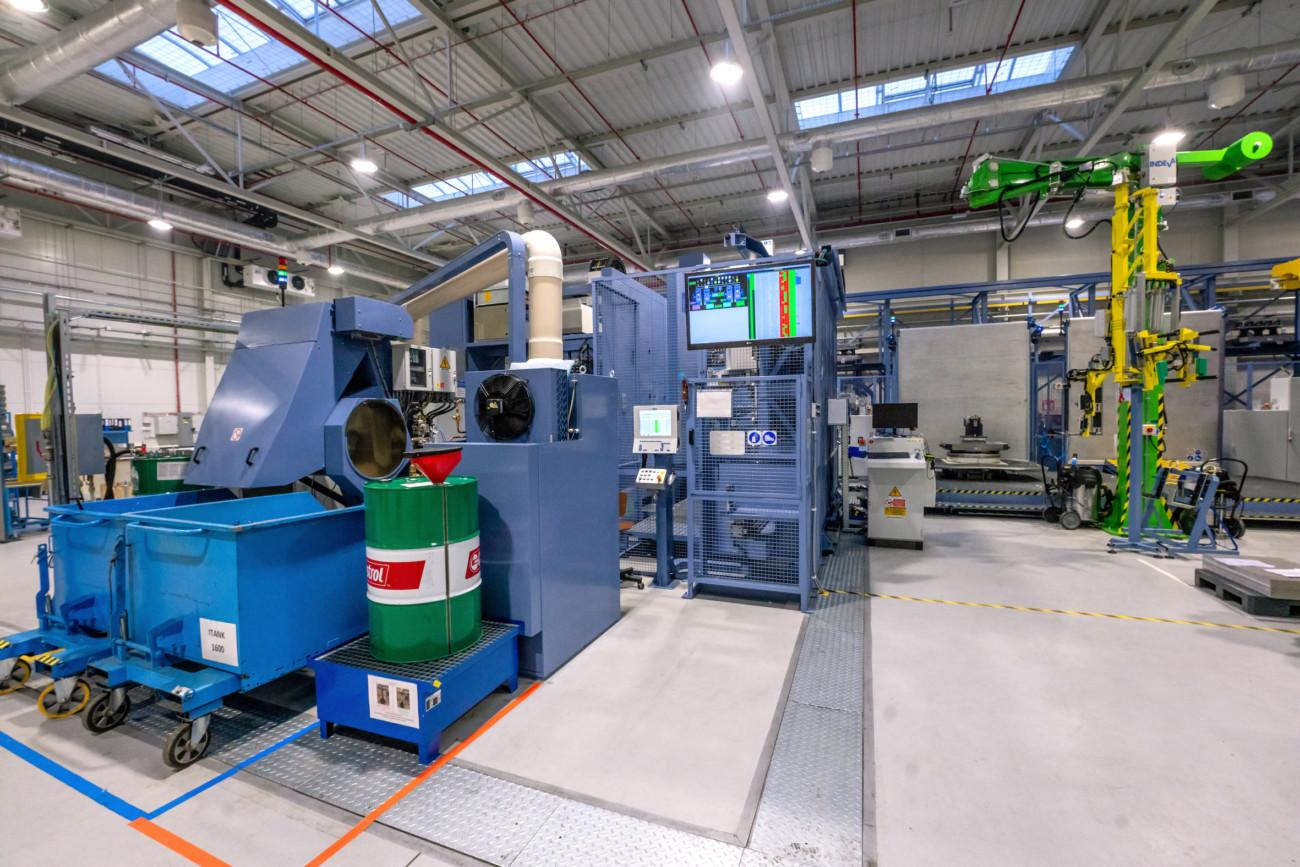
Customer benefits:
- 20% reduction in energy consumption
- 240 tons of CO2 emissions saved annually
- A wireless control system that enables the user to adjust the parameters of the luminaires
- A 1:1 replacement of the luminaires without changing the existing electrical installation
- 300% improvement in light intensity
- Lower Unified Glare Rating (UGR) and improved working conditions
- Task tuning by controlling each luminaire individually and changing the levels of lighting in specific areas
- Non-disruptive installation
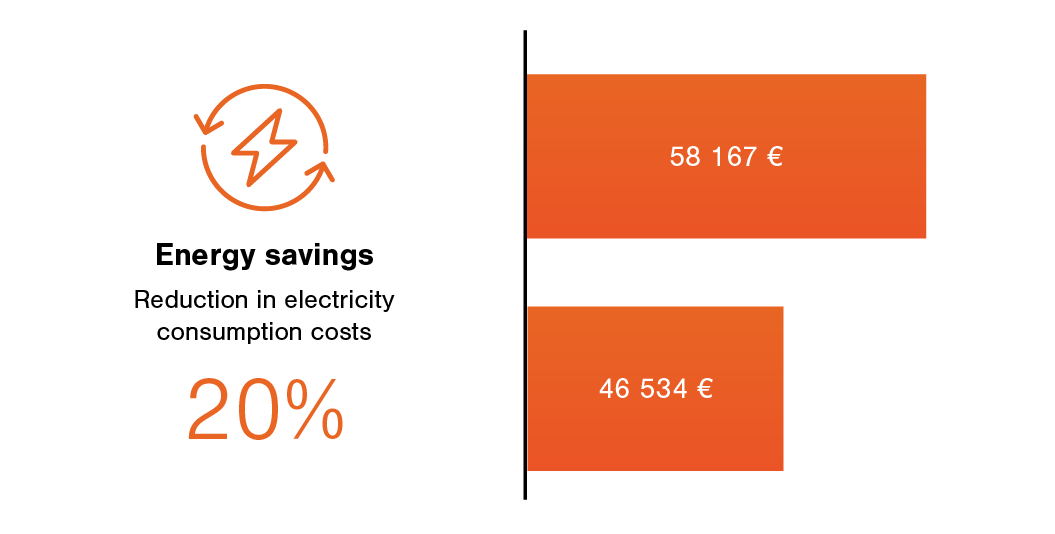
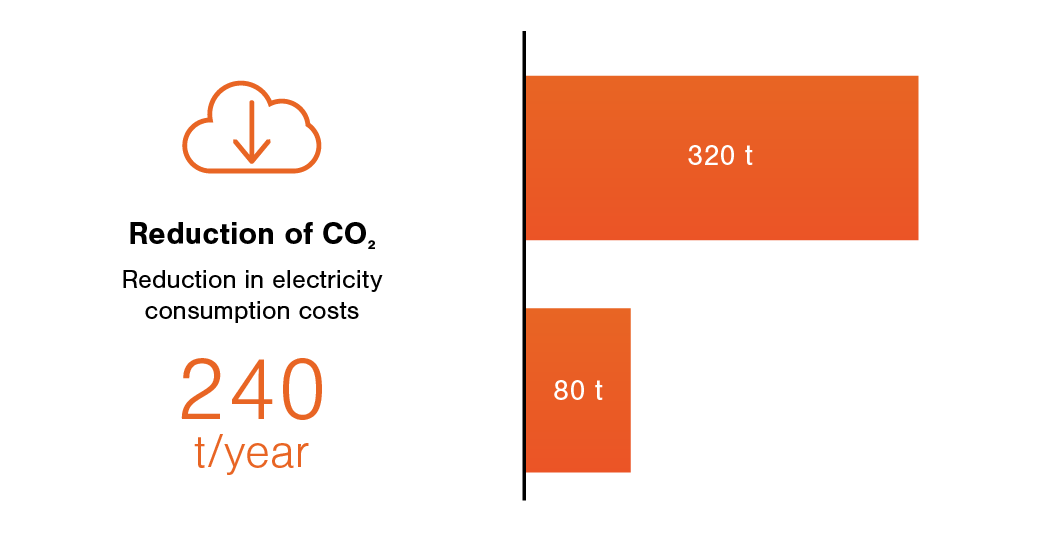
Goldbeck verifies Casambi performance for industrial applications at own facility
”Casambi seemed very interesting to us, so we decided to start a project in one of our plants, where we can do different tests over a long time and where we could evaluate costs, maintenance, and reliability. We concluded that it is ready for industrial use. It can be easily controlled and maintained by only a facility manager – no special electrician is needed. And even if it’s simple to understand and to learn how to program via the app, you can realize advanced lighting control solutions with it. Casambi is ready for industrial use and Goldbeck can offer Casambi to its customers as the new lighting control standard in industrial buildings”
Jonathan Dertenkötter, Goldbeck Product Development Electrical Engineering
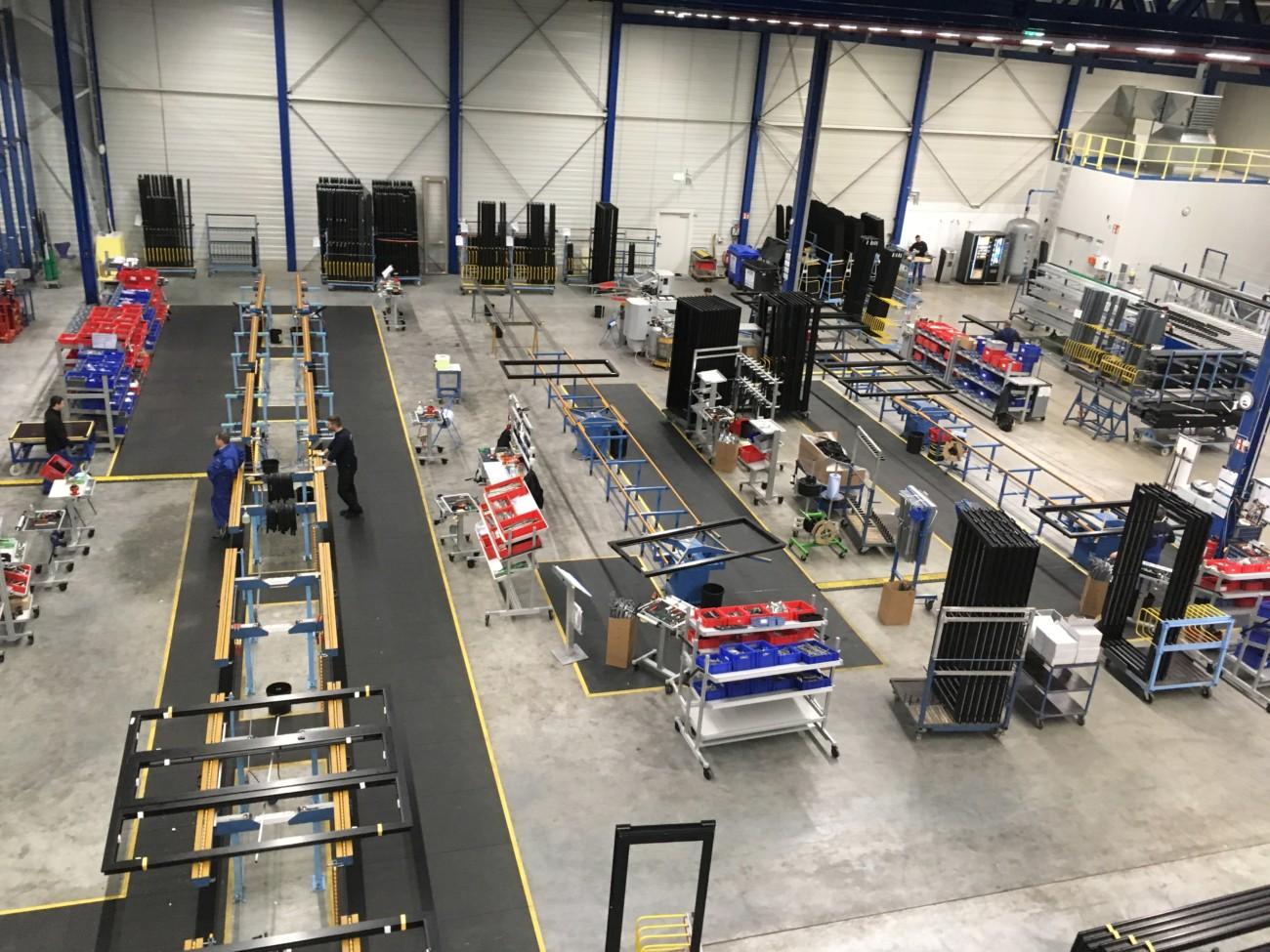
Goldbeck builds future-oriented commercial properties across Europe, and as a company is celebrated for its fast-building process and sustainable, intelligent building technologies. With 8000 employees in more than 70 locations, Goldbeck provides a full scope of services from design and construction to full lifecycle support during operation.
Casambi caught Goldbeck’s attention as a lighting control system that they could standardize into their planning strategies, so they tried it out in one of their plants (in Bielefeld, Germany). To generate and develop new intelligent building solutions, Goldbeck vigorously tests all proposed solutions to evaluate their reliability, ease of use/maintenance and cost efficiency. Herewith, they wanted to put Casambi’s control system through its paces too. They conducted tests to measure the overall energy savings, the range of the nodes, and led performance and field analyses of not only Casambi-native products but also those of third-party companies using Casambi technology.
The company was pleased with the results. They were particularly happy to learn that their typically-used control modes, like presence-controlled switching in the shelf corridors or daylight harvesting in the production/logistics area, could be implemented. It was calculated that should Casambi control be implemented across the whole warehouse space, significant energy savings could be achieved – to the tune of 58% annually. Consequently, Goldbeck will introduce the Casambi system internally.
Customer benefits:
- 58% drop in energy consumption
- Ability to perform lighting control tasks with ease – safely, effectively and efficiently
- Boundless advanced lighting control settings available via the Casambi App
- Improved working conditions with bespoke smart lighting scenes and daylight harvesting
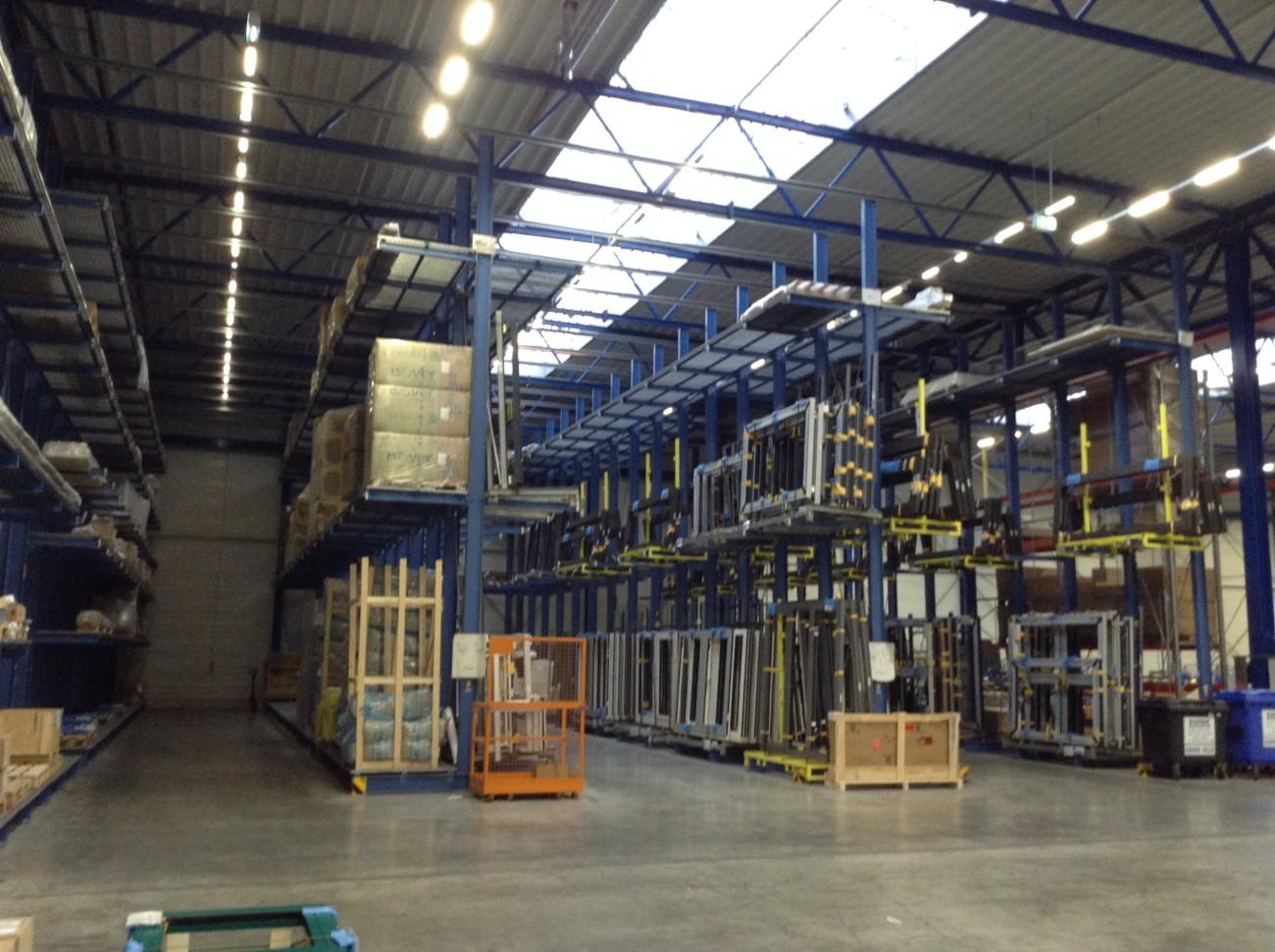
Specification Success Team
Casambi announced this year the formation of a Specification Success Team. Their mission is to see that all specification customers have a great experience using Casambi. Presently, the team comprises four lighting control design specialists, spanning four countries and with a deep collective knowledge of the smart lighting movement.
Meet the Team
Duygu Cakir – based in Istanbul, Turkey

Duygu is the team lead. She joined the company in 2021 from SLD Studios, where her experience as partner and principal consultant in the EMEA region is key as Casambi fortifies its support strategy. Duygu has overseen many projects of scale from airport terminals, multi-use complexes, offices, commercial centers and much more. Listed in ‘40 Under 40’ by Lighting Magazine UK, Duygu is a highly knowledgeable and formidable industry force. She holds a BSc in Electronics and Communications Engineering, an MSc in Lighting Design and Technology, and an MSc in Energy Technologies and Management.
‘Casambi’s platform can help achieve complex functionality with ease. As a team, we are on a drive to raise awareness amongst specifiers of the simplicity of planning a project with Casambi controls. It’s something they can do without relying on a specialist. We can attest to this because we, too, were once specifiers and therefore have a deep understanding of the daily challenges faced by our clients’
Leticia Mori – based in Madrid, Spain

Leticia is a civil/structural engineer with a master’s degree in Energy Efficiency. Over the years, Leticia has worked on many kinds of lighting projects spanning the industrial, hospitality, office, residential, and retail segments. She has participated in every phase of these projects from understanding clients’ needs to delivering fixtures on-site, and everything inbetween including lighting calculations, plans, technical documentation, and purchasing.
‘The world is constantly changing and nowadays we look for simpler and faster solutions. This is exactly what Casambi offers in the lighting field: a wireless lighting control solution that is quick and easy to install, and a powerful user interface – the Casambi app – that anyone can use. In addition, Casambi’s solution is proven to reduce energy consumption and promote well-being as it offers many control possibilities such as dimming, daylight control, circadian rhythm, timer, and so on. This speaks to my heart as someone who has conducted energy efficiency studies.’
Selen Celik-Gungor – based in Espoo, Finland

Selen holds a bachelor’s degree in architecture and has completed two master’s degrees in lighting design. She has worked as both an architect and a lighting designer. Her main responsibilities have spanned concept development, lighting planning, and calculations. On each of her projects, Selen focused on the relationship between light & human, light & science, and light & space.
‘We as designers are always talking about energy-saving and LED technology. I believe Casambi is one of few companies that truly enables energy-smart functionality and easy/flexible control of lighting designs. Controlling is not a new topic for us within the lighting industry, but Casambi has brought a new freshness with its features. I believe, nowadays, lighting design should be less about the final design and more about selecting the right product and technology depending on the project.’
Karla Martin – based in Milan, Italy

Karla obtained a bachelor’s degree in Industrial Design before going on to complete a master’s in Virtual Architecture and Interior. She has been working in architecture studios ever since.
‘I’ve worked as a lighting designer for many years – initially working with DALI. When I first discovered Casambi, I was bowled over by its simplicity, scalability, problem-solving capabilities, and the endless list of options it offers. Oftentimes, the first reaction to wireless tech is pretty negative or cautionary. There is this assumption that it will be overly complicated and expensive. I want to change this incorrect perception and open my industry peers’ eyes to the possibilities with Casambi.’
Looking to the future
Just as Casambi’s founders prophesized, lighting would become a key technology in making the Internet of Things a reality. In a world that’s shifting from product to augmented product to platform, the increasing capabilities of wireless smart lighting control are expanding the possibilities to go greener, evolve businesses to become more efficient, and to improve health and safety in the workplace.
When lighting is connected to the cloud, it enables a world of data services. Facility lighting becomes Industry 4.0-ready, unlocking the potential in indoor positioning services for heatmapping, asset tracking or simply real-time energy consumption monitoring. And it all starts with wireless lighting control.
Together with Casambi’s ecosystem partners, the Specification Success Team is dedicated to supporting lighting planners and designers throughout their project design, planning, commissioning, configuration, and handover stages.
Casambi’s smart lighting functionality brings new dimensions to design: color temperature, lighting colors, dimming, human-centric lighting, and individual tuning. Freeing up specifiers to create their own wow factor.

Casambi is an open ecosystem of truly interoperable devices. We are a neutral partner for all the industry players.

Our technology is integrated into fixtures, drivers, modules, switches, sensors, and different kinds of control modules.

Casambi supports key industry standards that have significant market presence.

Data and control access trough the Extension interface and Cloud API.
About Casambi
Casambi is changing the way people and businesses light their surroundings. Since 2011, the Finland-headquartered company has established itself as the leading producer of wireless lighting control systems, using technology based on Bluetooth Low Energy. Casambi’s technology can be integrated into anything from individual lighting fixture controls to industrial-scale solutions with cloud-based remote control, monitoring, and data logging. To date, well over 3 million – and counting – Casambi Ready devices have been sold worldwide, and the combined offering has been specified in over 100,000 projects. Casambi is currently growing at a rate of 7500 projects per month, with references spanning every application from small high-end residential to 10,000+ node industrial spaces.








